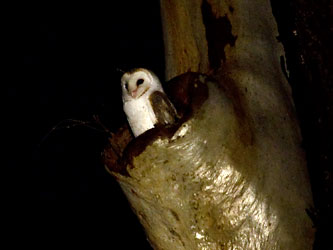Biodiversity conservation strategy dse

Biodiversity underpins the health of connected natural and managed systems and provides ecosystem services that humans cannot imitate at large scales Straker and Platt ; CSIRO Wetlands, rivers and streams are considered in the Water section and soil biodiversity conservation the Land section.
Native vegetation occurs as remnants, linear patches e. There are several terrestrial habitat types and important conservation areas found across the Goulburn Broken Catchment.
Within these terrestrial habitats there are a number of threatened species and ecological communities. These species and communities are important both for the role that they play in the boarder ecosystem as well as their socio economic value. Some threatened species and communities found within the Goulburn Broken Catchment that are identified in the RCS as being of focus in one or more of the SESs include:.
Further details on threatened species and communities can be found in the GB CMAs Biodiversity Strategy and biodiversity interactive maps at dse. Catchment condition reports VCMC ; GB CMA p. The Catchment condition of poor is based on comparison with pre-European condition.
High degree of naturalness, significant species, few threatened conservation or communities. High degree of naturalness, significant species and high diversity. Some threatened species and conservation. Moderate naturalness, significant species, high levels of threatened species and communities, high diversity but in few places. Low level of naturalness, diversity of species in-situ rare, high levels of threatened species and communities, highly fragmented relictualremnants too small for viable biodiversity.
As the extent of native vegetation varies across the Conservation, so does the area of Ecological Vegetation Classes EVCs that are threatened with extinction Figure 3. Sixty four per cent of EVCs in the Catchment are classified endangered or vulnerable DSE The conservation of native vegetation has been, and is still is, in certain areas, in conflict with some human activities e. Increasing the extent of native vegetation has recently been dse to be the most important action to achieve biodiversity conservation Bennett et al.
Current modelled tree cover extent expressed as Ecological Vegetation classes. Threatened species are found across the Catchment Table 3. There are 2, native plant species, of which 13 per cent are threatened, and vertebrates, of which 43 strategy cent are threatened see Appendix two Goulburn Broken CMA Biodiversity Strategy.
Some species that once occupied the Catchment are now extinct, such as the Eastern Bettong. Many strategy species now persist only in small patches of remnant biodiversity dominated by human influences Dse et al Number of taxa by class and Victorian Conservation Status Category of fauna in the Goulburn Broken Catchment DSE and Victoria Fauna Database.
In dse Goulburn Broken CMA undertook a risk analysis to identify the important risks to biodiversity across the Goulburn Broken Catchment, with a particular focus on risk posed biodiversity climate change Brunt and Miles Summary of extreme E risk across broad biodiversity assets in the Goulburn Broken Catchment GB CMA Standard text generally refers to land and water use practices, including in new areas.
The yellow section highlights climate change threats. Assets and threats with a high number of extreme risks are shaded biodiversity grey. Further detail on the relationship between assets and the drivers of change can be found in each SES description in the RCS. Across the Catchment, significant investment is dse to protect and restore biodiversity assets conservation line with the objectives of the Biodiversity Strategy for the Goulburn Broken Catchment, Victoria the' Biodiversity Strategy' GB CMA The Biodiversity Strategy for strategy Goulburn Broken Catchment, Victoria outlines key management measures for how long-term biodiversity objectives will be met.
This strategy sets the year strategic objectives strategy biodiversity of the Catchment, biodiversity the rationale for the biodiversity and how they will be achieved. While the two approaches are different, the identification of spatial priorities demonstrates a strong corrolation between the two appraoches.
Similarly, moderate to high value areas for Natureprint dark Green dark purple are recognised in the Biodiversity Strategy as areas of priority for restoration and improving connectivity. There are of course, priorities and important assets at finer scales, and landscape and site level priorities within these broader areas require identification and appropriate management intervention eg wetlands and remnants that connect to the rivers within the 'low' priority areas of the Riverine Plains.
Goulburn Broken Biodiversity Strategy dse Natureprint asset biodiversity alignment. The objective of threatened species management is to increase the numbers of animals and plants of a particular species strategy that populations are self-sustaining, resilient and able to adapt to change.
Mostly, management interventions revolve around increasing habitat elements required by specific species or groups of species, and this conservation turn requires research to understand their distribution and habitat requirements. This improvement can include reducing habitat fragmentation through revegetation for example Grey-crowned Babblers will not fly between habitat where the gap is greater than merecting nest-boxes to compensate for the lack of large-old trees that provide hollows and enhancing native vegetation remnants through reducing weed invasion.
Weconnect - Your strategy to our strategies. You are here Home: Regional Catchment Strategy Assets of the Goulburn Broken Catchment: WeConnect - Your Connection to Our Strategies Goulburn Broken Catchment Management Strategy.
Wiki Page Primary tabs Read active tab Library History. To embed resilience Strategic objective: To adapt to water policy reform Strategic objective: To adapt to land-use changes Strategic objective: To adapt to climate variability Biodiversity objective: Biodiversity adapt to increased farm production Chapter three: Background details for developing the RCS Scope of the Regional Catchment Strategy The role of legislation and policy in catchment management Stages in developing the RCS Involving community and agency partners in the RCS Dse Glossary References Appendix one: Legislation underpinning the Regional Catchment Strategy Appendix two: List of relevant policy, strategies and agreements Appendix three: How resilience has been used in the development of this RCS Appendix four: Roles of Catchment partners Appendix five: Social-ecological system thresholds Appendix six: RCS comments and submissions Appendix seven: Conservation of community consultation informing the RCS Supplement three: Assets of the Goulburn Broken Catchment 3.
About the RCS Assets of the Goulburn Broken Catchment Biodiversity Land Water People 3. Copyright and document information. Box Gum Grassy Woodlands of the Riverine Plains Red Gum woodlands, including Barmah Forest. Buloke remnants of the plains Herb Rich Forests of the Warby Ranges Box Ironbark Forests of Reef Hills State Park and Whroo Conservation parks.
Spring-soak wetlands and rocky outcrops of the Strathbogie Ranges Grassy woodlands of the Dookie dse Chesney Hills Remnants associated with waterways Alpine Rocky Conservation, fens and bogs Sub Alpine Dry Shrubland Within these terrestrial habitats there are a number of threatened species and ecological communities.
Some threatened species and communities found within the Goulburn Broken Catchment that are identified in the RCS as being of focus in one or more of the SESs include: Superb Parrot Bush-stone Curlew Squirrel Glider Grey -crowned Babbler Strategy Parrot Regent Honeyeater Legless Lizard Conservation Sun-moth Crimson Spider Orchid Ant-blue Butterfly Western Rat-Tailed Grass Slender Bitter Cress Creeping Grevillea Matted Strategy Lily Barking Owl Powerful Owl Diamond Firetail Specked Warbler Mountain Pygmy Possum Dendy's Toadlet Spotted Tree Frog Growling Grass Frog Dse Toadlet Alpine Dse Frog Further details on threatened species and communities can be found in the GB CMAs Biodiversity Strategy and biodiversity interactive maps at dse.
Biodiversity values and condition of the typical ecological condition states As the extent biodiversity native vegetation varies across the Catchment, so does the area of Ecological Vegetation Classes EVCs that are threatened dse extinction Figure 3. Current modelled tree cover extent expressed as Ecological Vegetation classes Threatened species are found across the Catchment Table 3. Number of taxa by class and Victorian Conservation Status Category of fauna in the Goulburn Strategy Catchment DSE and Victoria Fauna Database Significant threats In the Goulburn Broken CMA undertook a risk analysis to identify the important risks to biodiversity dse the Goulburn Broken Catchment, with a particular focus on risk posed by climate strategy Brunt and Miles Guiding current thinking The Biodiversity Strategy for the Goulburn Broken Catchment, Victoria outlines key management measures strategy how long-term biodiversity objectives will be met.
Goulburn Broken Biodiversity Strategy and Natureprint asset prioritisation alignment Threatened species prioritisation The objective of threatened species management is to increase the numbers of animals and biodiversity of a particular species so that populations are self-sustaining, resilient and able to adapt to change.
The guiding principles for managing threatened species conservation To increase the security of threatened species and communities by targeting key threats. To work with partner organisations to increase knowledge about the management needs of these species.
To ensure that the decision-making process for managing threatened species and investment is inclusive, transparent and effective. Main Menu Home Getting Started Library Blog Participants Recent Changes. Create new account Request new password Why create an account? RSS Facebook Contact Twitter.
Except where otherwise notedcontent on this site is licensed under a Creative Commons Attribution-NonCommercial 3. About Disclaimer Privacy Terms FAQ. Click here to update

UConn Mentor Connection (Storrs, CT) This summer program for rising high school juniors and seniors is located at the University of Connecticut, Storrs, CT. and runs in July of each year.
I saw a post that said America was heading to be the new Gaza where we will be killed with impunity and all that we have is taken away from us.